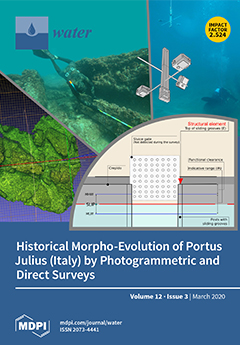To improve solid precipitation monitoring in the hydrology and meteorology field, 1-min precipitation data observed by the PARticle SIze VELocity (PARSIVEL) disdrometer in Nanjing, eastern China, from February 2014 to February 2019 for all days with solid precipitation, were used to study the
[...] Read more.
To improve solid precipitation monitoring in the hydrology and meteorology field, 1-min precipitation data observed by the PARticle SIze VELocity (PARSIVEL) disdrometer in Nanjing, eastern China, from February 2014 to February 2019 for all days with solid precipitation, were used to study the microphysical characteristics of winter precipitation. In this study, the empirical
V-D (velocity–diameter) relationships and observed surface temperature are used for matching precipitation types, and the precipitation data are divided into rain, graupel, wet snow and dry snow. The results show that dry snow and wet snow have maximum
Dm (mass-weighted mean diameter) and minimum log
10Nw (normalized intercept parameter), while rain shows the opposite. Additionally, the
μ-Λ (shape parameter–slope parameter) curve of dry snow and wet snow is very close, and the
μ value of dry snow and wet snow is higher than that of graupel and higher than that of rain for the same
Λ value. Furthermore, the
Ze-S (equivalent reflectivity factor–precipitation intensity) relationships among different types of precipitation are significantly different. If only the
Ze-S relationship of rain is used for quantitative precipitation estimation (QPE), then, for small precipitation intensity, solid precipitation will be overestimated, while, for large precipitation intensity, it will be underestimated.
Full article





